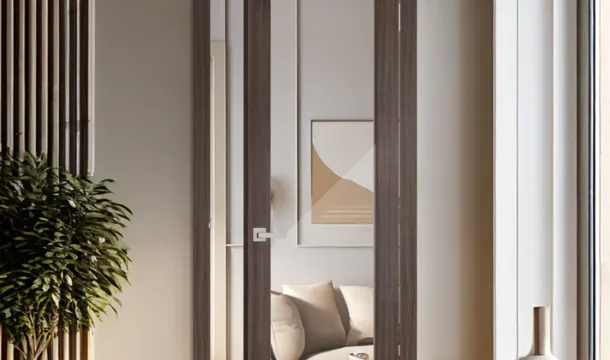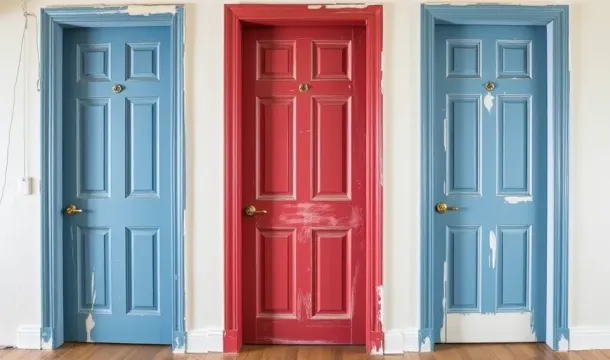Waterproof Interior Doors Designed for Laundry Rooms and Mudrooms
Popular Articles
Choosing waterproof doors made from resistant and durable materials is a practical solution for laundry rooms and mudrooms, where moisture exposure is frequent. These interior doors prevent warping, swelling, and damage caused by humidity, ensuring long-lasting performance in challenging Canadian climates.
Materials such as fiberglass, PVC, and specially treated wood composites offer superior water resistance without sacrificing aesthetic appeal. Their construction supports daily wear while maintaining structural integrity against constant contact with wet shoes, damp clothing, and steam from appliances.
Mudrooms demand doors that can withstand dirt, mud, and moisture infiltration. Opting for waterproof interior doors specifically engineered for these conditions reduces maintenance needs and protects adjoining living spaces from moisture-related issues like mold or mildew growth.
Choosing Materials Resisting Moisture
Opt for doors made from high-density fiberglass or PVC composites, as these materials offer superior resistance to moisture compared to traditional wood. In laundry rooms and mudrooms, where humidity and splashes are frequent, such durable materials prevent warping, swelling, and mold growth.
Canadian-engineered waterproof interior doors often incorporate advanced sealing technologies combined with moisture-resistant cores like marine-grade plywood or extruded polystyrene foam. These components enhance structural integrity while maintaining a lightweight profile suitable for indoor use.
Metal doors coated with corrosion-resistant finishes also provide excellent moisture protection but require insulated cores to avoid condensation issues inside the home. When selecting doors, prioritize those tested against Canadian climate standards for moisture resistance to ensure longevity in damp environments.
Additionally, surfaces treated with water-repellent laminates or acrylic coatings increase durability and simplify cleaning without compromising aesthetics. Avoid untreated natural wood or MDF in laundry and mudroom interiors since they absorb moisture quickly and deteriorate under constant exposure.
The combination of these materials guarantees that waterproof interior doors remain functional and visually appealing despite heavy exposure to moisture typical of laundry spaces and mudrooms.
Sealing Techniques Preventing Water Damage
Applying high-quality weatherstripping around waterproof interior doors ensures a tight barrier against moisture infiltration common in Canadian laundry rooms and mudrooms. Use EPDM rubber or silicone gaskets for their superior durability and resistance to humidity.
Seal all door edges with waterproof polyurethane caulking, especially at the threshold and jambs where water exposure is highest. This prevents water from seeping into vulnerable joints between door frames and walls.
Install drip caps or door awnings above exterior-facing doors to divert water away from seals, extending the lifespan of moisture-resistant materials used in the door construction.
Regular inspection and maintenance of seals in mudrooms ensure long-term water resistance. Replace worn strips promptly to sustain the waterproof integrity of laundry room doors exposed to frequent moisture cycles.
Door Designs Minimizing Dirt Entry
Doors with raised thresholds and recessed bottoms effectively reduce dirt infiltration in mudrooms and laundry rooms. These features create a physical barrier that blocks debris carried on shoes or pets from entering the interior space.
Slab doors with smooth, flat surfaces made from durable canadian materials simplify cleaning and prevent dirt accumulation in grooves or panels. Choosing doors finished with waterproof coatings enhances resistance to moisture without compromising ease of maintenance.
Incorporating tight-fitting weatherstripping around door edges minimizes gaps where dust and soil can penetrate. Combined with precise manufacturing tolerances, this ensures a snug fit that supports both moisture resistance and dirt control.
Doors featuring integrated kick plates composed of wear-resistant materials protect lower sections from scuffs and dirt buildup caused by frequent contact in high-traffic mudrooms. These plates maintain door integrity while supporting long-term durability.
The combination of these design elements produces interior waterproof doors optimized for mudrooms, limiting dirt entry while ensuring lasting performance under moist conditions.
Installation Tips for Humid Spaces
Ensure waterproof interior doors are installed with a continuous vapor barrier between the door frame and wall to prevent moisture infiltration. Use corrosion-resistant fasteners and anchors designed for Canadian climate conditions to maintain durability in mudrooms and laundry rooms. Apply high-quality sealants specifically formulated for humid environments around the perimeter of the door jamb to create a watertight enclosure.
Position doors slightly raised above the floor level–at least 1/8 inch–to avoid direct contact with water or damp surfaces, reducing risk of swelling or warping. Opt for door hardware with rust-resistant finishes, such as stainless steel or brass, which withstand constant exposure to moisture without degrading.
During installation, verify that all joints and seams are tight; gaps can allow moisture to accumulate inside framing cavities. Incorporate weatherstripping materials rated for wet areas to enhance resistance against humidity while ensuring smooth door operation. Finally, perform a thorough inspection post-installation to confirm no water penetration points remain, securing long-term performance of waterproof and durable interior doors in demanding humid spaces.
Maintenance Practices Extending Door Lifespan
Regular cleaning and inspection are key to preserving the durability of waterproof interior doors in laundry rooms and mudrooms. Use a soft cloth with mild soap and water to remove dirt and residues without damaging moisture-resistant surfaces.
- Lubricate hinges and hardware: Apply a silicone-based lubricant every six months to prevent rust and ensure smooth operation, especially in humid Canadian environments.
- Check seals and weatherstripping: Inspect door seals quarterly for cracks or gaps; replace worn materials promptly to maintain waterproof integrity against moisture exposure.
- Avoid harsh chemicals: Do not use abrasive cleaners or solvents that can degrade the door’s resistant coatings or finish, reducing its lifespan.
- Control indoor humidity: Use exhaust fans or dehumidifiers in laundry areas to limit excess moisture that accelerates wear on door materials.
- Repair minor damages immediately: Address scratches, dents, or chips in waterproof coatings with appropriate touch-up kits designed for durable interior doors.
Implementing these maintenance steps ensures your laundry and mudroom doors remain resistant to moisture, dirt, and everyday wear, extending their functional life significantly while preserving appearance and performance.
Popular Articles

Choosing the Perfect Interior Doors for Your Canadian Home

A Complete Guide to Choosing Interior Doors for Canadian Homes
